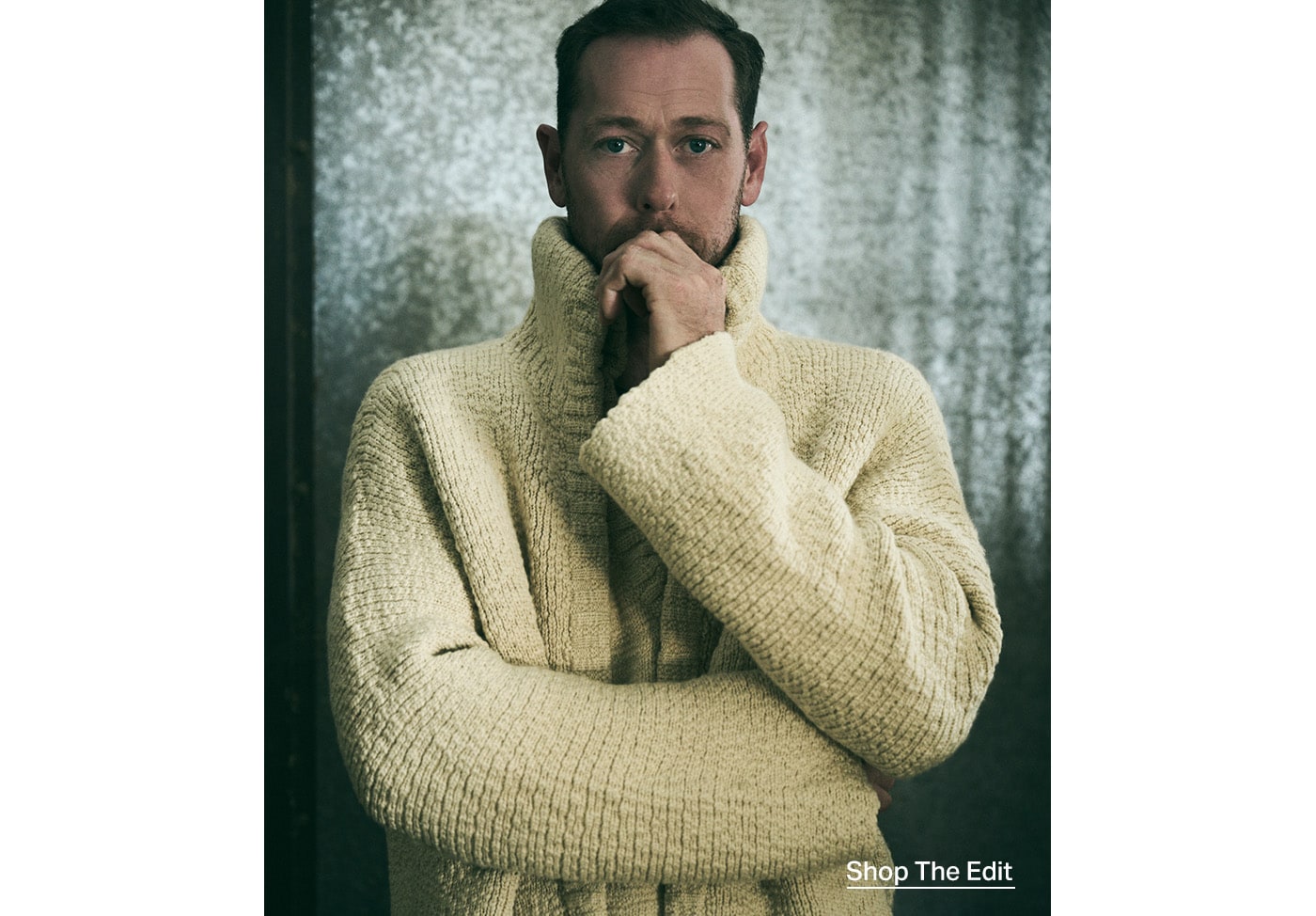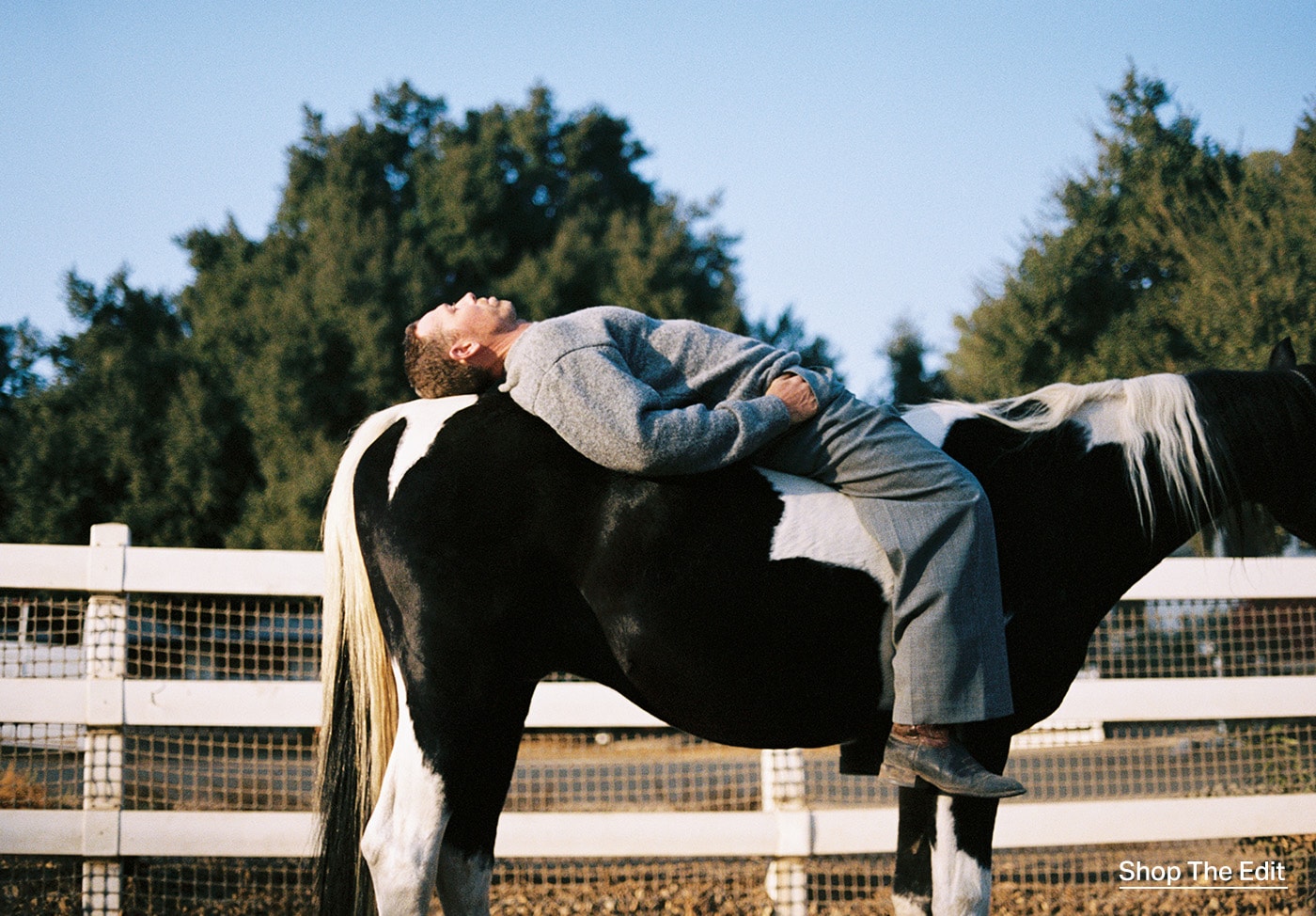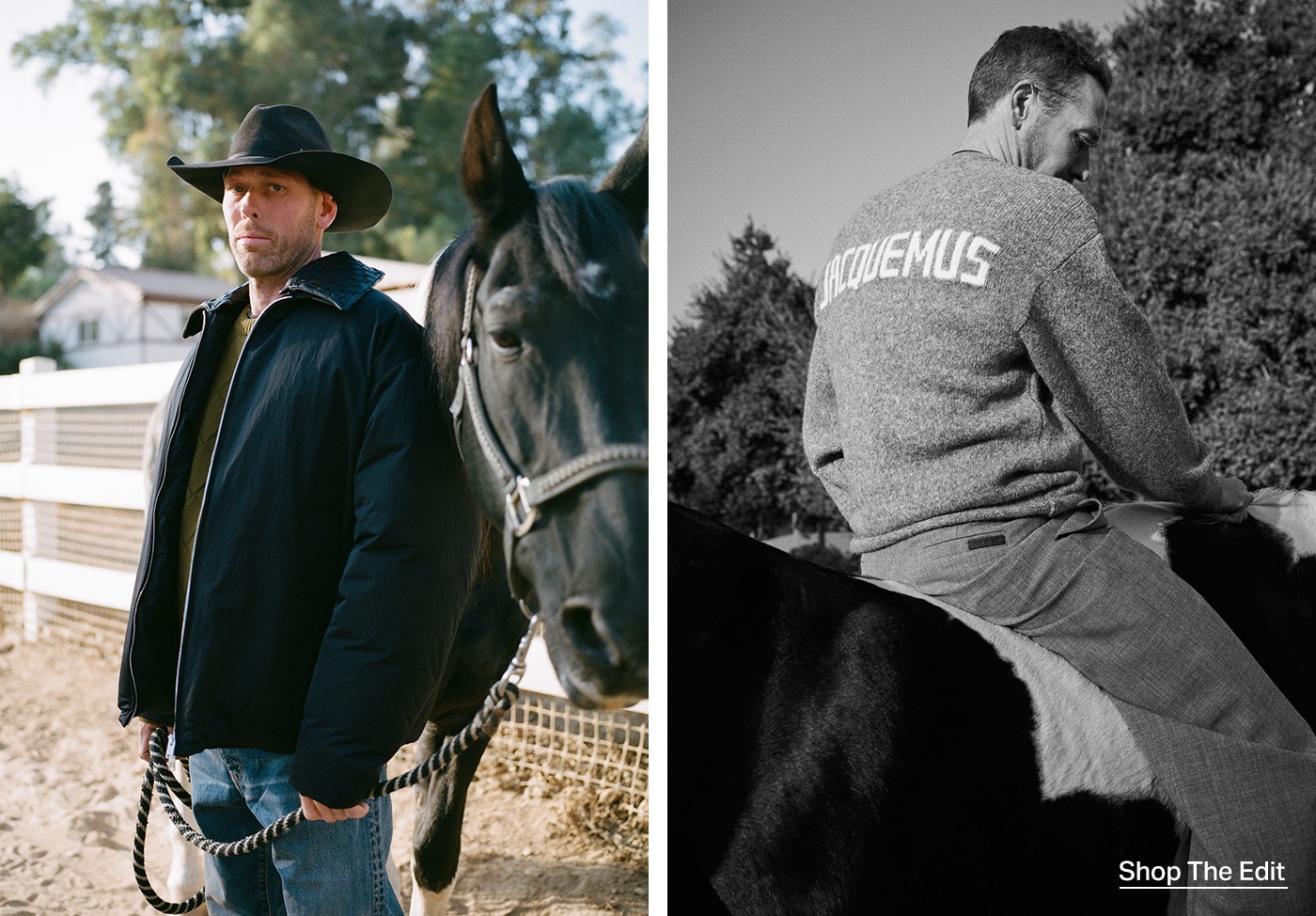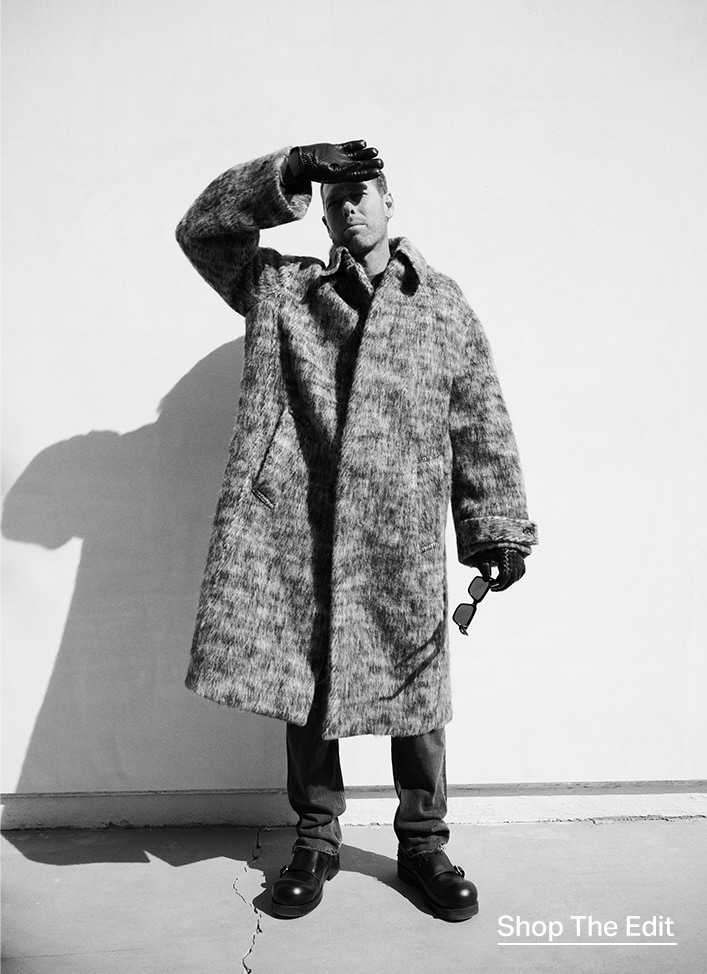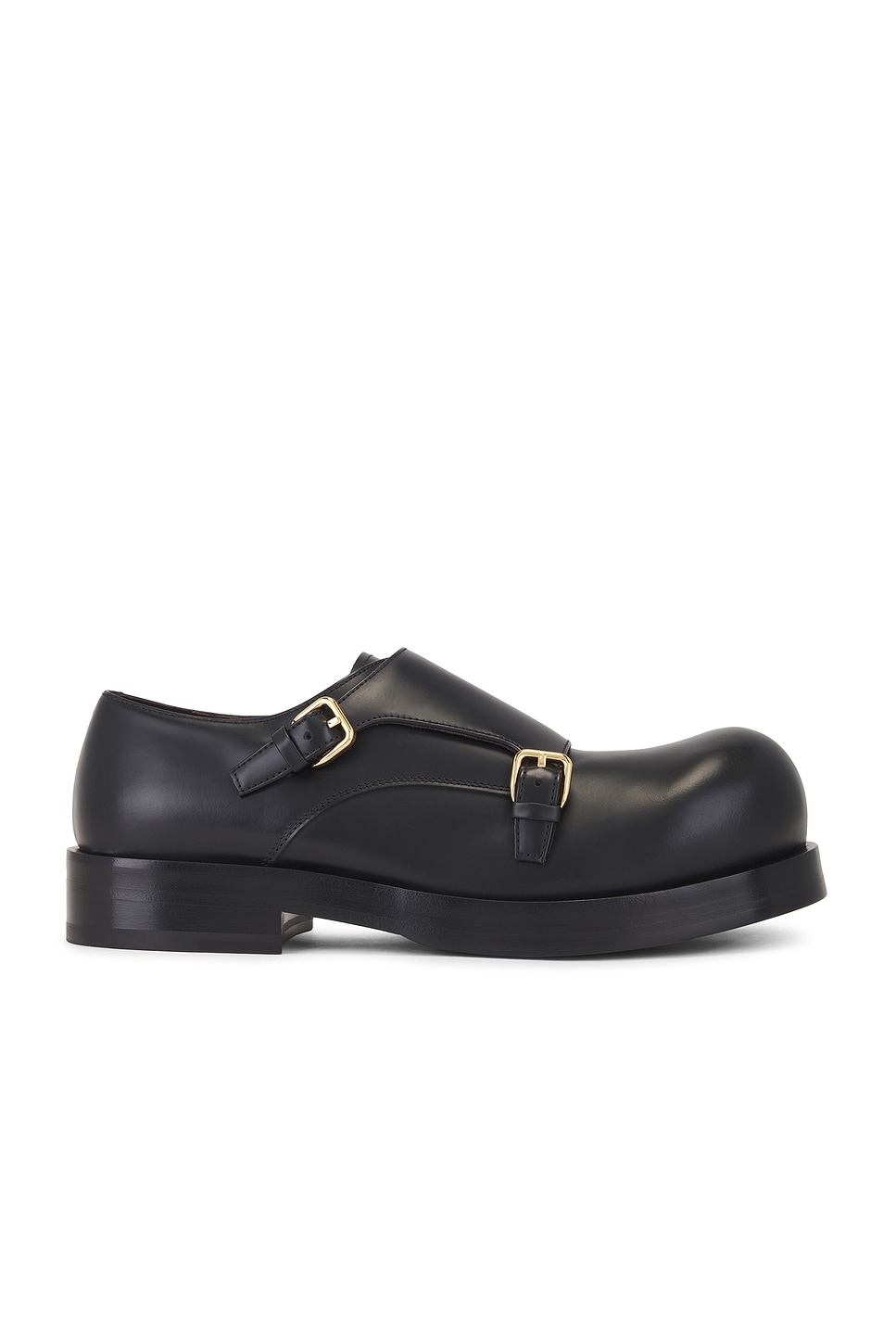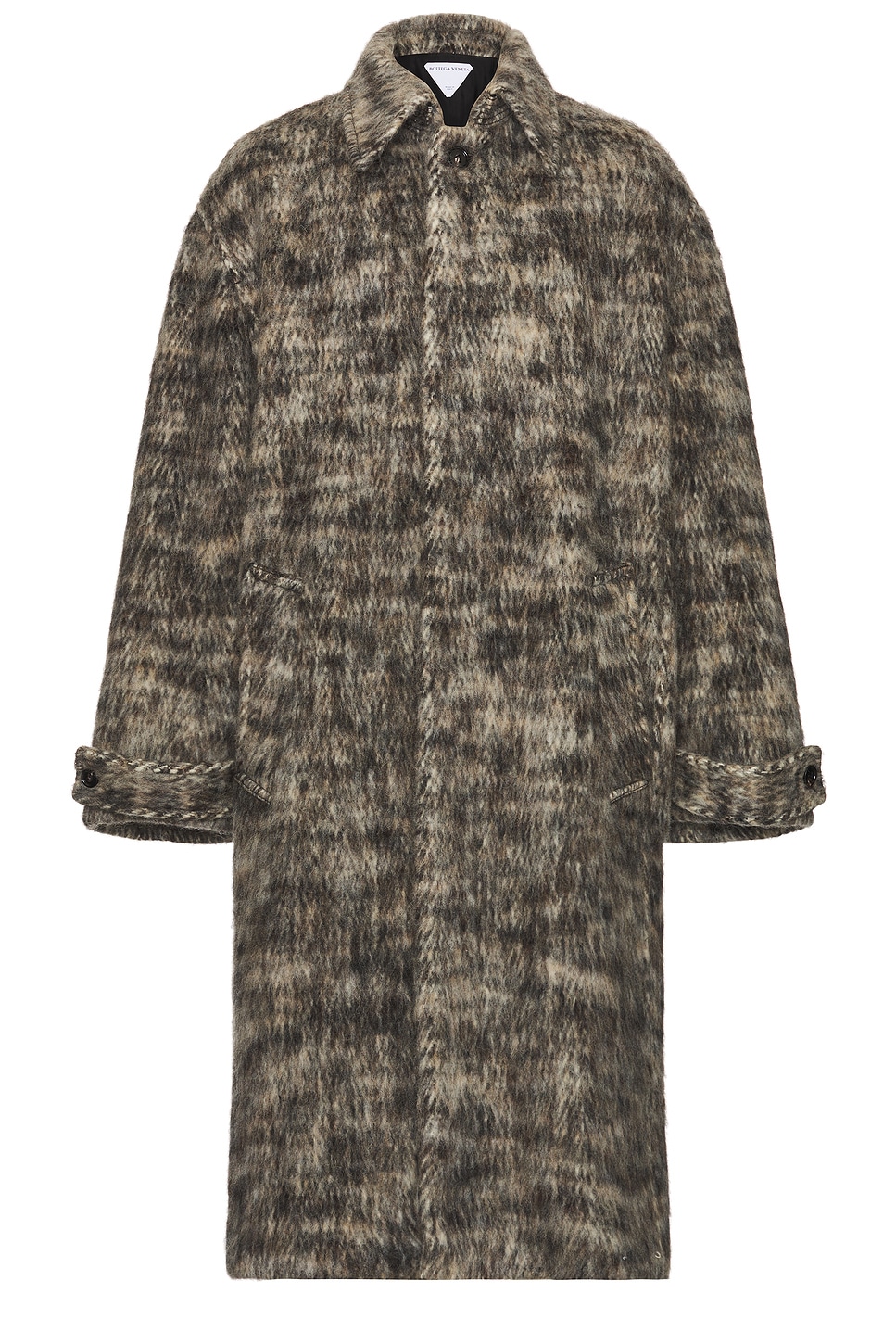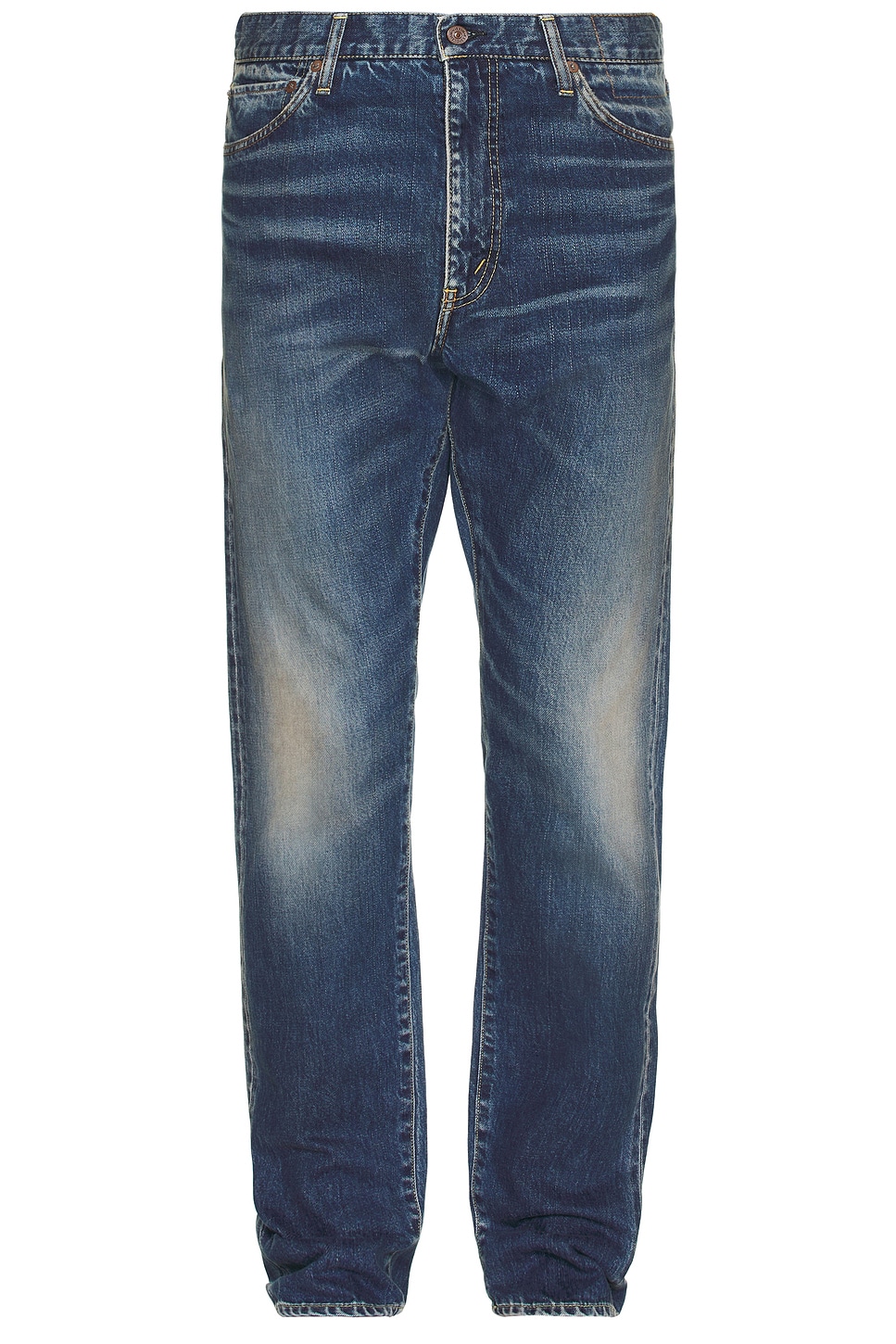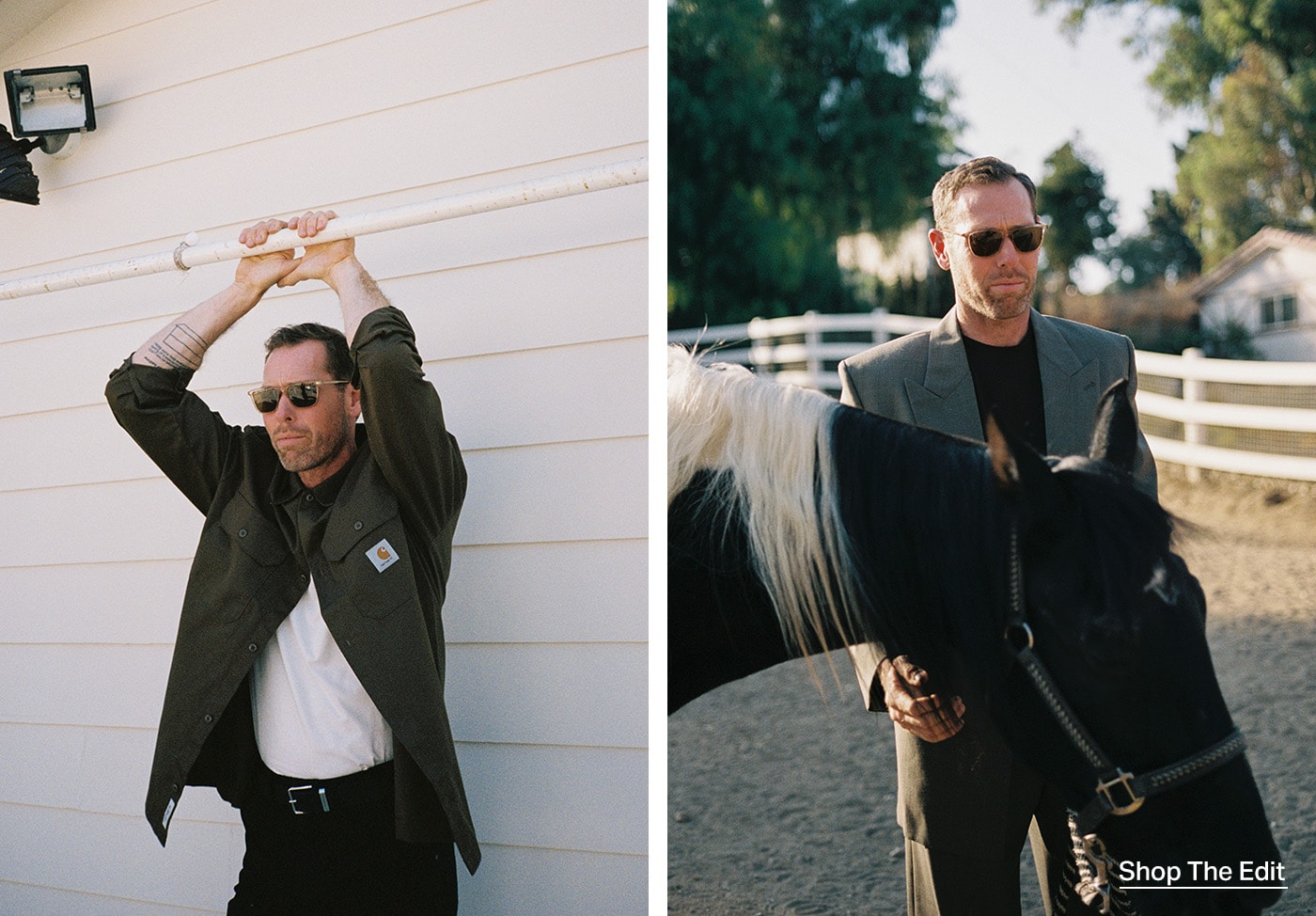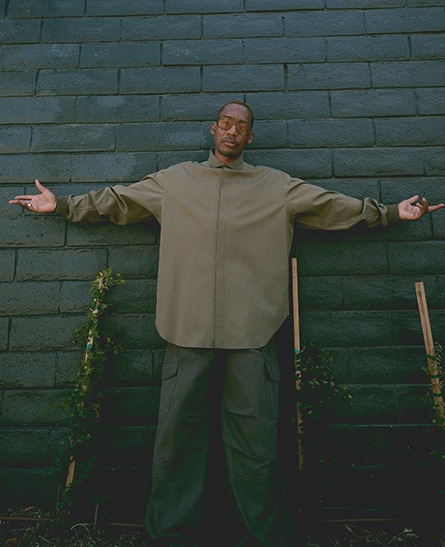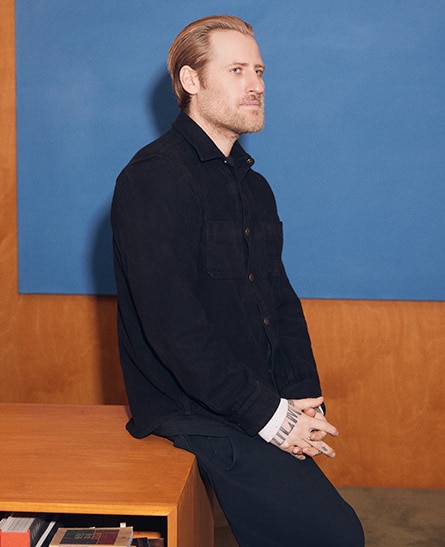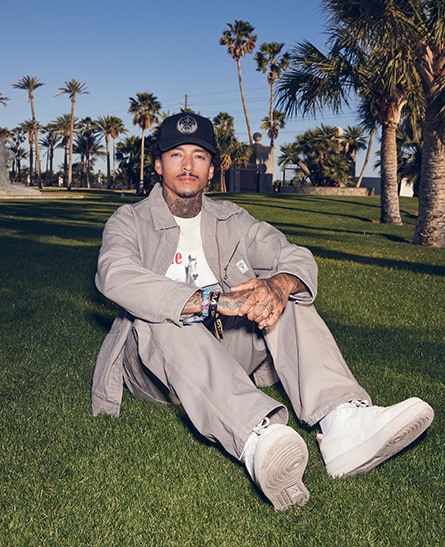Nick Turner Champions the Fusion of Western Culture and Modern Art
Infused with authenticity and history, the artist’s Western-inspired work delves into the powerful relationship between man and nature.
Nick Turner is an artist who is deeply invested in the subjects of nature and movement. In a world where the frontiers have been pushed to the margins, Turner seems to authentically encapsulate the modern-day vestiges of an explorer, someone more comfortable in nature than a bustling city. With the fashion world’s recent fixation on western, and Americana aesthetics Turner’s work with horses and the western sentiments, as well as his experiences within fashion, has uniquely positioned him to be a voice of the current moment. We sat with the artist and spoke to him about his upbringing, his craft and the modern culture.
"With age, I’ve come to value durability and timelessness. I’d rather have a few quality pieces that last than follow trends. It’s similar to my approach in art—creating something that will stand the test of time."
Throughout your career you’ve worked in several different mediums, how would do you describe yourself as an artist?
I’d say I'm an artist, plain and simple. My roots are in painting, having trained in New York at Parsons, but I’ve always loved capturing images. I grew up with a camera, my mom worked in journalism, so I naturally found myself shooting friends in New York, which led to fashion jobs. Now, I combine both photography and painting. My work is more abstract in painting, while my photographs have a clean, timeless feel to balance that out. I’ve always collected stuff, and I take a lot of Polaroids, and so I started kind of merging both tangible objects and photography. Now I've gotten to the point now where I just do what I like to do.
How did your upbringing shape your artistic style?
I was homeschooled until I was around 14, and we traveled a lot—wherever we studied, we visited. We went to places like Italy and Paris to see the art we were learning about. I lived in Greece when I was very young, my first words were Greek actually. Then, I spent seven years in France at a French high school, which shaped my love for different cultures. It was also socially challenging. I didn’t have that consistent friend group, and being in a French school without speaking French was isolating. I became an observer—taking things in but not fully participating. This observation-focused approach is definitely reflected in my art. Also, growing up around British and Greek influences, I got to see how vastly different cultures can be. Trying to live in those places as an adult didn’t work for me, though. Right now, Portugal feels like home, but I still enjoy coming back to the U.S.
Do you feel settled in Portugal, or are you still exploring?
I feel pretty settled in Portugal, mainly because of surfing. It’s still relatively untouched compared to other parts of Europe, and the waves are incredible. But I have a hard time staying in once place, this summer, for example, I was in Wyoming working with horses and doing art. I find that I need a mix—enough movement to keep things interesting but with a place to come back to.
Your work feels deeply connected to nature. How do you see the relationship between your craft and nature?
I’m not really interested in creating static, realistic images anymore. My focus has shifted to the dynamic—something that conveys feeling. The horses I paint are always in motion, and my ocean photography captures that raw energy, like shooting storms off the coast of Portugal. I’m interested in the interplay between man and nature, where you’re participating in something larger than yourself. I’ve spent my life riding horses, and now with surfing, I’m experiencing a similar energy. Both experiences make you fully present and humble you.
Horses and the ocean are dominant themes in your work. Do you see a connection between them?
Absolutely. When you’re riding a challenging horse or surfing a big wave, you’re finding moments of rhythm with something powerful and unpredictable. That fleeting harmony is what draws me to both. There’s an overlap between these subjects in my work—they both provide a kind of therapy. It’s grounding and humbling, whether you’re riding a 1,500-pound animal or a towering wave.
Your lifestyle seems rugged and nature-focused. How does fashion fit into that world for you?
I’m surprisingly particular about clothes. With age, I’ve come to value durability and timelessness. I’d rather have a few quality pieces that last than follow trends. It’s similar to my approach in art—creating something that will stand the test of time. I don’t focus much on high fashion for my day-to-day, but I appreciate classic, well-made pieces, like some of the things I worked on with Saint Laurent.
There’s a current trend towards Western and American aesthetics, similar to the surf and skate culture trends of the past. With you being involved in both, how do you view this shift?
I see the appeal. When I was in high school, skate culture was countercultural, far from mainstream. Now, brands have embraced that aesthetic, and I think Hollywood’s influence has made cowboy culture more popular too. It’s a trend for sure, and I’m not sure it will last. I’m also aware of how much history and authenticity these styles have. I’ve noticed that, especially in Europe, people are paying high prices for brands like Wrangler, which originally had a very practical purpose. I believe in earning your place in a culture before making art about it. For me, that means fully immersing myself in the Western lifestyle, from rodeos to learning Western riding.
Do you see similarities in how skate, surf, and Western styles have evolved?
There’s definitely a pattern. Skating and surfing used to be rebellious lifestyles, but now they’re more athletic and mainstream. I know surfers who have fitness apps and diet plans. That shift has made both sports more publicly accepted, with big brands jumping on board. I think the Western trend may follow a similar path. The rugged American style has its own classic appeal, and it seems like a lot of people are eager to embrace it, even if they don’t fully understand the culture behind it.
What are you currently working on?
I just published a book with YSL, which I’m proud of because it’s a tangible way to tell a story. Now, I’m working on a second book focused on life on a ranch from an artist’s perspective, featuring paintings, photos, and text. I also started my own brand of organic, heavyweight shirts and hoodies last year, and I plan to keep building it.

